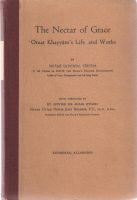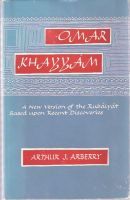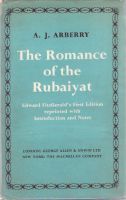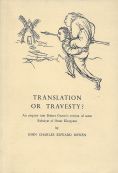The nectar of grace. ‘Omar Khayyám’s life and works by Swámí Govinda Tírtha (V.M. Datar). With foreword by Sir Akbar. Allahabad, Kitabistan, 1941.
Includes the Persian text of the Ruba’iyat with an English translation. Reissued in 2010 by Oxford City Press.
Contents:
Bibliography
History and notices regarding ‘Omar Khayyam
‘Omar Khayyam’s scientific and philosophic works
Manuscripts and editons of ‘Omar Khayyam’s Quatrains
Works of other Persian authors.



